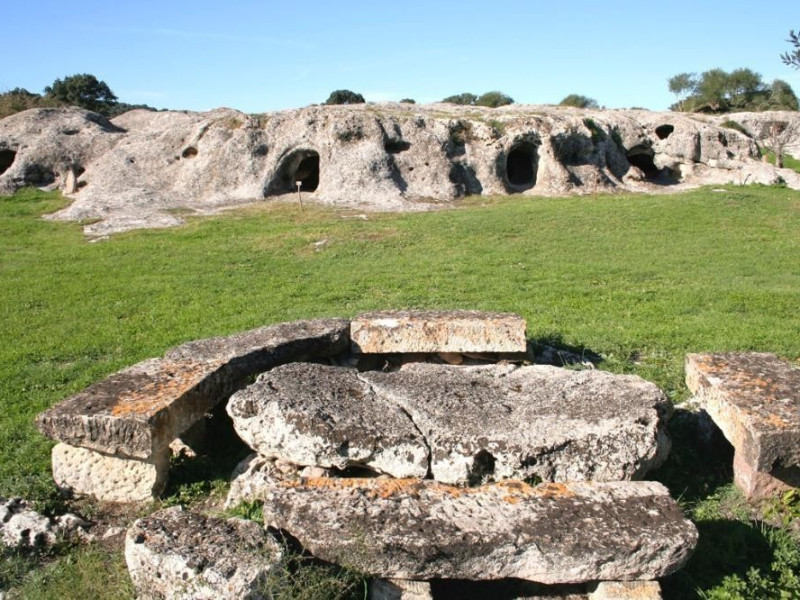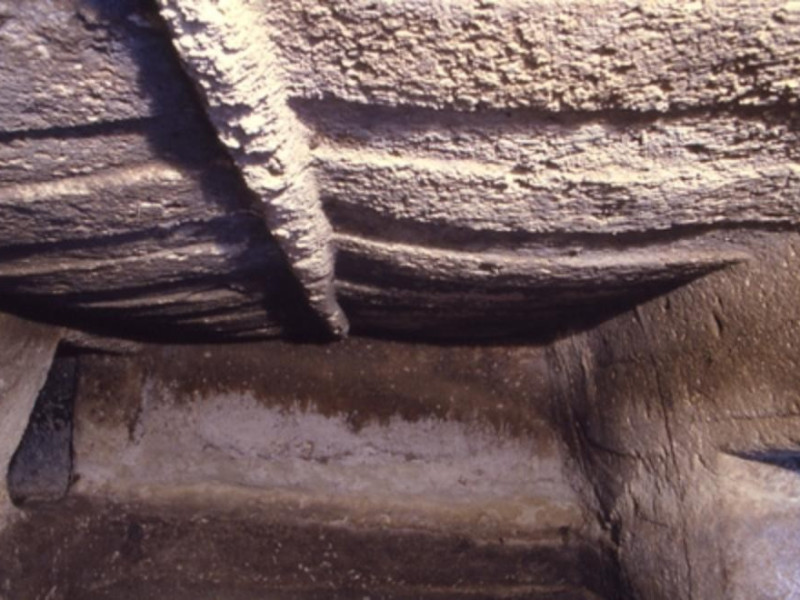Luogo - Archaeological Area
Complesso archeologico di Pottu Codinu
Where
Villanova Monteleone (Sassari)
The necropolis of Santu Pedru rises on the homonymous hill, overlooking a fertile plain. It’s made up of ten domus de janas tombs (literally “witch house” or “fairy house”), hollows cut into reddish trachyte and tufa rocks, with an uncovered entrance corridor (dromos) and pluricellular plan. The domus de janas tombs show architectonical elements and decorations of the living’s houses (steps, bases, cornices, lintels, semicircular roofs) and are adorned with ritual elements as false doors, symbol of the imperturbability of the dead’s world, bull horns, symbol of strength, fertility and apotropaic element, and some traces of red ochre painting, the colour of blood and regeneration. Tomb I, called “tetrapode vases tomb” for two well-preserved ceramic vases on four feet, is the most important domus de janas for its dimension and refinement. Tomb VIII preserves some traces of its conversion to church (7th-8th century) dedicated to the Saints Peter and Lucy. Nearby there is an arcosolium tomb (burial into an arched niche) dating back to the Roman period. The nuraghe Santu Pedru rises on the top of the hill, a single tower nuraghe built of rough trachyte blocks, with the traces of an ancient village all around it. This area had been frequented from the Late Neolithic Age (Cultura di Ozieri, 3300 BC) to the Medieval Age (6th-7th century AD) thanks to a territory rich in water, propitious for breeding and agriculture.


